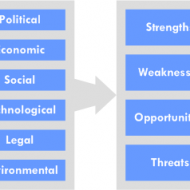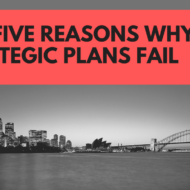Posted by Managementguru in Business Management, Decision Making, Entrepreneurship, Human Resource, Motivation, Quotes and Quotes Only
on Sep 25th, 2014 | 0 comments

Best Leadership Quotes “Only one man in a thousand is a leader of men — the other 999 follow women. Groucho Marx The Leader In You – #Dale Carnegie “Leadership is the capacity to translate vision into reality. – Warren Bennis Developing the Leader Within You – “You don’t lead by pointing and telling people some place to go. You lead by going to that place and making a case. – Ken Kesey Awaken the Leader in You – Mitesh Khatri “No man will make a great leader who wants to do it all himself, or to get all the credit for doing it.– Andrew Carnegie How To Win Friends Influence People – “Outstanding leaders go out of their way to boost the self-esteem of their personnel. If people believe in themselves, it’s amazing what they can accomplish. – Sam Walton The Leader in You – Peter Miller “To lead people, walk behind them.” – Lao Tzu “The best leader is the one who has sense enough to pick good men to do what he wants done, and the self-restraint to keep from meddling with them while they do it – Theodore Roosevelt “The challenge of leadership is to be strong, but not rude; be kind, but not weak; be bold, but not bully; be thoughtful, but not lazy; be humble, but not timid; be proud, but not arrogant; have humor, but without folly– Jim Rohn “Leadership is a potent combination of #strategy and character. But if you must be without one, be without the strategy – Norman Schwarzkopf “Successful leaders see the opportunities in every difficulty rather than the difficulty in every opportunity – Reed Markham “The problem with being a leader is that you’re never sure if you’re being followed or chased – Claire A. Murray “Do not follow where the path may lead. Go instead where there is no path and leave a trail – Harold R. McAlindon “Learn to see things backwards, inside out, and upside down – John Heider, Tao of Leadership “The real leader has no need to lead- he is content to point the way. #Henry Miller “A leader is a dealer in hope – Napoleon Bonaparte From Manager to Leader “If your actions inspire others to dream more, learn more, do more and become more, you are a leader – John Quincy Adams “The art of leadership is saying no, not yes. It is very easy to say yes – #Tony Blair “Never tell people how to do things. Tell them what to do and they will surprise you with their ingenuity – George Patton “Leadership does not always wear the harness of compromise – Woodrow Wilson “Take time to deliberate; but when the time for action arrives, stop thinking and go in – Andrew Jackson “To be a great leader and so always master of the situation, one must of necessity have been a great thinker in action. An eagle was never yet hatched from a goose’s egg – James Thomas “A good general not only sees the way to victory; he also knows when victory is impossible – Polybius “Leadership is being the first egg in the omelet – Jarod Kintz “Leadership consists of nothing but taking responsibility for everything that goes wrong and giving your subordinates credit for everything that goes well – Dwight D. Eisenhower “##management is doing things right; leadership is doing the right things – Peter F. Drucker...

Posted by Managementguru in Business Management, Decision Making, Entrepreneurship, Marketing
on Sep 21st, 2014 | 0 comments

Business Viability Checklist for Entrepreneurs Hey Folks, here is a checklist for business viability or feasibility analysis, the fore-most step before starting a venture. Whether you are a dare devil driver yearning to embrace entrepreneurship as a result of your eternal frustration of saying” Yes-Boss” 24/7, or a first generation entrepreneur , this checklist will be of immense help in that it will reduce the elements of uncertainty and risk. Unlock massive growth using the business development channel. Learn pitching, BD strategy, cold emailing, & deal closing. Bestselling **** Many businesses look at profit within quotes as ultimate viability. Even if the business is not currently profitable or undergoing a growth surge, or just going through a bad patch – there is an anticipation of being profitable at some future date. This hope of future profit warrants continued investment. We can also consider the social and environmental aspects of an organization adding value, if it satisfies any social costs. You need to know what is viability? Viability is defined as the ability to survive or persist. In a business sense, that ability to survive is ultimately linked to financial performance and position. A business is viable where either: it is returning a profit that is sufficient to provide a return to the business owner while also meeting its commitments to business creditors it has sufficient cash resources to sustain itself through a period when it is not returning a profit. ASK YOURSELF THE FOLLOWING QUESTIONS BEFORE STARTING-UP THE OPEARTIONS: Why are some companies PROFITABLE and some not? Why do some companies CONTINUE TO EXIST and some not? What does success and survival mean? How ESSENTIAL is profit? How can a company survive when it is not making a profit? How can a company NOSE-DIVE when it is making a large profit? How VITAL is growth? Can a company become NON-VIABLE simply because it fails to maintain its year-on-year growth? How imperative is CORPORATE IMAGE? Are these factors relevant to business viability? The following post from franchisesunder10k.net provides great insight on easy online businesses to start in 2018. https://franchisesunder10k.net/these-are-the-easy-online-business-opportunities-you-ve-been-looking-for Fundamentals of a Feasibility Plan • Provide key information needed by investors and bankers • Reasons for its chance of success/failure • Supporting Documents • Explanation of the principal concept underlying your venture and what sets it apart from other businesses. Infographic Courtesy : Entrepreneur.com SOME OF THE REASONS WHY NEW VENTURES FAIL • Lack of Objective Evaluation • No Real Insight into the Market • Inadequate Understanding of Technical Requirements • Poor Finance Understanding • Lack of Unique Selling Proposition • Ignorance of Legal Issues Let us now look at some of the important dimensions of business viability: Market viability Technical viability Business Model viability Management model viability Economic and Financial Model viability Market Viability: Utilize Porter’s 5 Competitive Forces Model to understand market viability and industry position. Technical Viability: You do not have to incorporate specific financial information in the technical portion of your feasibility study, but all data in this component must support your financial figures represented elsewhere. Basic things that most businesses need to include in their technical feasibility study include: Materials Labor Transportation or Shipping Physical Location Technology Business Model Viability: P.E.S.T. Analysis A PEST analysis is a business measurement tool. PEST is an acronym for Political, Economic, Social and Technological factors, which are used to assess the market for a business or organizational unit. Management Model Viability: Decision making process Training and Cross-training Management Capability to effectively lead the organization in a sustainable growth mode Management Systems and processes, and General Leadership Capabilities are scrutinized. Economic and Financial Mode Viability: Capital Structure Cash Management Profitability and Liquidity are dealt with when...

Posted by Managementguru in Business Management, Decision Making, Human Resource, Motivation, Strategy
on Aug 20th, 2014 | 0 comments

Why Strategic Plans Fail What are Strategic Action Plans? Action plans refer to definite actions that are related to either short- or longer-term strategic goals. Action plans should include details of resource commitments, allocation and time horizons for accomplishment. Action plan development represents the key stage in planning that facilitates effective communication of plans throughout the organization followed by resource planning and deployment. Action plans are also referred to as projects, strategies, tactics, or initiatives. Plans in paper may look more creative and feasible in nature; in reality it is a big quest unanswered. Are executives showing the same kind of enthusiasm in giving shape to the plans they charted out in paper? Most plans fail or do not give the expected optimum results and the reasons attributed may be listed out as follows: 1. Authority is delegated but Responsibility is forgotten: Senior management executives are the STRATEGIC DECISION-BRAHMAS obviously but do they demonstrate what needs to be done? Demonstration is one of the powerful forms of communication and if the strategies are only to be communicated down the line and not to be followed by the senior officials how do you expect your team to perform efficiently? 2. Confusion between strategy and Ideas: An idea is a conceptual construct about a particular thing. It is more abstract in nature. But when it comes to strategy, you need to have a solid FUTURISTIC action plan that is bound to give you the desired results in the long term. The elements essential for a good action plan are: Availability of Resources (Men, Material and Money)Efficient Resource Allocation to the various Strategic Business UnitsProper DeploymentRegular Follow-up until accomplishment of goalsMinor Modification of plans in accordance with the macro environment (legal, economic, financial etc.,) 3. Dis-Orientation of Senior Leaders: If a senior leader reaches that higher position through internal promotion, he loses touch with day-to-day activities though he has a strong contextual understanding of the business. If a senior management leader happens to reach the top through external recruitment, it takes time for him to understand the business and the nature and needs of the organization. Only few leaders are capable of devising action plans that exactly nails the problem-situation (as we all know when an organization is looking for a turn around, the first blow is to the CEO of the organization). 4. Laissez Faire attitude doesn’t work out for strategic action plans: A senior leader has to monitor an action plan from the start till the end until the expected result is achieved. No strategy succeeds without a visionary in the background. The passion that a leader exudes is overwhelmingly infectious and motivates the team to complete a project. Here the leader is the initiator who is involved throughout strategic planning process so that momentum is sustained during the critical transition from planning to action. Follow ManagementGuru Net’s board Strategic Management – The Inevitable on Pinterest. 5. There might be one good goal but definitely no one good strategy: Understand strategies are subjected to change in accordance with the internal and external environment. Say, you have invested quite a good amount of money in shares of a particular reputed company and you come to know that there is a senior level management leadership change and feelers are that prices are likely to crash. What will you do? Just being able to conceive bold new strategies is not enough. The management must also be able to translate its strategic vision into concrete steps that is “getting things...

Posted by Managementguru in Business Management, Decision Making, Principles of Management, Project Management, Strategy
on Jul 31st, 2014 | 0 comments

A goal has the word ‘go’ in it. Your goals should go forward in an unambiguous direction. However, goals are more about everything you accomplish on your journey, rather than getting to that distant point. Goals will often go into undiscovered territory and you therefore can’t even know where the end will be.

Posted by Managementguru in Business Management, Decision Making, Marketing, Strategy
on Jul 12th, 2014 | 0 comments

Stability Strategy in Management The Concept: A stable strategy arises out of a basic perception by the management that the firm should concentrate on using its present resources for developing its competitive strength in particular market areas. In simple words, stability strategy refers to the company’s policy of continuing the same business and with the same objectives. When a product is well accepted and has a brand value in the market, the company would want to expand its market base in that particular product segment to win over its competitors. For example, ‘Old Cinthol’ from Godrej, continues to be the trusted choice of most customers and one of the top most brands in soaps. Especially in rural areas, people prefer Cinthol which comes in different sizes in lieu of customer preference. Panneer Soda manufactured by Kalimark, a soft drink available only in southern parts of Tamilnadu is again a long-standing brand preferred by customers belonging to middle class and lower middle class. This indigenous brand is a direct competitor for coke and pepsi, the soft drink giants in the industry. The same applies to “BOVONTO” again a kalimark product whose growth terrorised giants in the likes of COKE and PEPSI. It is said that some of the multi-national companies tried to crush this small but indigenous and successful company by buying all the glass bottles used for bottling the drink from small retailers. All done by paying high price for old bottles and breaking them so that those bottles were not available for the kalimark manufacturers. Putting up a brave fight, Kalimark has introduced pet bottles (plastic containers) and for managing the dearth of containers they have erected a bottling plant also. Recently Kalimark group has reinvented itself with modern technology for production. The shape of Bovonto pet bottle was redesigned and production was increased. Related Posts: TURNAROUND STRATEGY STRATEGY EVALUATION TACTICS OR STRATEGY The Need for Stability Strategy: It continues to serve the customers in the same product or service, market and functional sectors. Its main strategic decisions focus on incremental improvement of functional performance.’ The focus is on maintaining and developing competitive advantages consistent with the present resources and market requirements. Say, if your business is doing well and you are able to factorize the economies of scale with a fairly decent profit, you would not want to go for expansion in the immediate future; instead you would go for, Sustenance Competitor management and Market share Maintenance Man has an inbuilt fear of change and only very few take that extra step to rage forward by being risk-aversive. Stability strategy suits medium-sized growing firms which have to first get well established in the market and wait for the right time to invest and divest. Companies do not go beyond what they are presently doing; they serve the same market with the present products using the existing technology. The essence of stability strategy is, therefore, not doing anything but sustaining a moderate growth in line with the existing trends. Advantages of Stability Strategy: The firm is successfully run and the objectives are achieved and there is satisfactory performance. Therefore, the management may want to continue with the same activities. A stability strategy is less risky. Unless the conditions are really bad, a firm need not take any additional risks. The management doesn’t foresee any change in the environment or opportunity in the market or any threat. When pursuing this strategy, there is no disruption in routine work. The down side of this strategy may be “setting of boredom” where you tend to do routine stuff, but the brighter side is the continuous positive response...










